After almost 19 years, the latest classification of periodontal diseases was presented on 22 June 2018 at the EuroPerio9 in Amsterdam.The presentation is an outcome of last November’s World Workshop of American Academy of Periodontology (AAP) and European Federation of Periodontology (EFP) on Classification of Periodontal and Peri-implant diseases and conditions. The new classification was reviewed by nearly 110 experts from around the world at the workshop in Chicago last year.It aims to incorporate peri-implant diseases and address the challenging issue of differentiation between chronic and aggressive forms of periodontal disease.
Dental Tribune South Asia spoke to two senior eminent Periodontists in India, Dr.Neel Bhatavadekar and Dr.Tarun Kumar about the latest buzz in the world of Periodontics and present some of their views on the same
DT SEA:The latest classification of Periodontal and Peri-implant diseases is here. What are your first thoughts about it?
Dr. Neel Bhatavadekar: A new way of looking at Peri-implant and periodontal diseases was needed. This publication is a step in the right direction. The different working groups who are a part of this publication are clinicians who represent years of clinical and research experience. Bringing them all together is no mean feat. Kudos to the AAP (American Academy of Periodontology) and the EFP (European Federation of Periodontology).
Dr. Tarun Kumar: It is a very exhaustive overview that covers all the drawbacks of the 1999 classification. I believe it is quite comprehensive with the introduction of the concept of clinical gingival health.
What's exciting and what's not about the latest Classification?
Dr. Neel: The new classification summarizes evidence from the last 20 years in an attempt to provide an evidence based approach to treatment planning and prognosis. The end objectives are obviously how this relates to actual patient care. Some terms have also been changed, such as replacing "biologic width" with "supracrestal tissue attachment".
This brings more emphasis to the biologic components in each term (supracrestal attachment refers to connective tissue fibers and junctional tissue). Given the information at hand, it does prompt the clinician to approach peri-implant and periodontal diseases as multi factorial, but since the evidence regarding some translational aspects is still lacking, it may not address all the questions that currently persist.
Dr. Tarun: Exciting factor here is the introduction of the concept of clinical health, the need for which has been felt for long now. The new classification of recession which overcomes the shortcomings of Millers classification. The concept of gingivitis in reduced periodontium and treated periodontitis patients provides a framework which will be path-breaking in the way we diagnose as well as assess post treatment patients.
Not exciting factors are firstly, removal of the term aggressive periodontitis(AgP) saying that Chronic Periodontitis (CP) and AgP have a common end point and only different phenotype is not justified. The need for a more aggressive treatment plan required for AgP is diluted by removal of this term.
Second aspect is that certain terminology changes seemed to have been made just for sake of it. For example, biologic width to supracrestal tissue attachment or Occlusal trauma in place of trauma from occlusion.
The previous classification was termed an Encyclopedia by many. Is the current system different from it and how?
Dr. Neel: The current system acknowledges that the definitions of periodontal and peri-implant diseases might differ from a clinical practice standpoint and from an epidemiological standpoint. Thus, they provide the 'new' definitions which will be beneficial to clinicians. In my opinion, a key presentation in this manuscript is that a treated and stable periodontitis patient with current gingival health remains at an increased risk of recurrent periodontitis. An extrapolation can also be made for the "treated" peri-implantitis patient.
Dr. Tarun: This is definitely different. If the previous classification was an encyclopedia, this one is an encyclopedia on each lesion. The need to be exhaustive is essential, however, it should be kept in mind that it should be simple enough for day to day usage. This classification addresses certain issues which are mainly for research purpose and may descend into clinical practice quite slowly.
Will the inclusion of model based staging and grading make our diagnosis simpler?
Dr. Neel: The model based staging and grading promises to enhance the ability of the clinician to make evidence based decisions.
Dr. Tarun: The aim of an ideal classification should be to present a guide to the etiology, prognosis and treatment plan. It’s unclear as to how the exclusion of Aggressive Periodontitis (AgP) and the inclusion of staging and grading will contribute to that.
Rather than simpler, I would say that this classification may make our diagnosis more accurate. However only time will tell us about how effective it is.
Chronic and aggressive forms of the disease have always posed a dilemma. Does the classification provide the essentials solutions to simpler diagnosis?
Dr. Neel : Any disease classification poses two problems. If it's made too complex, then clinical implementation becomes a problem and if it gets too simple then one risks losing out on important diagnostic and prognostic information. This new classification walks this fine line quite well.
Conventionally, in my private practice setting, the treatment of aggressive periodontitis has chiefly differed from chronic in the use of antibiotics (sometimes combination antibiotics). I don’t think the new classification would influence treatment philosophies for this segment greatly, but it might help clinicians get a broader outlook for treatment.
Dr. Tarun: The last 20 years of research says that there is a difference in etiology, progression, clinical presentation, prognosis and treatment planning of AgP and CP. Ignoring this just to make a classification simpler is not justified. If not anything, it may lead to misdiagnosis.
How helpful will this system be for clinicians to treat periodontal disease?
Dr. Neel: Clinicians will be able to utilize this system to segregate patients from an evidence based standpoint. For instance, a novel system of classifying mucogingival defects has been introduced. The new system also highlights the fact that predisposing or contributory factors such as diabetes and smoking need to be closely considered, but that there is no separate disease entity called "diabetes induced periodontitis".
Overall, this new classification and system provides the much needed updated knowledge compared to the 1999 classification, and is a definite step in the right direction.
Dr. Tarun : Among the positives of this classification is the inclusion of the concept of gingival health, which makes many things clear as far as diagnosis and treatment planning is considered. However, removal of AgP may end up negating that step.
Thank you for sharing your views.
BRUSSELS, Belgium: The European Federation of Periodontology (EFP) recently commissioned the Economist Intelligence Unit (EIU), a provider of forecasting ...
AMSTERDAM, Netherlands: In recent years, increasing attention has been given to aspects of oral health in patients with rheumatoid arthritis (RA), ...
BIRMINGHAM, UK: The link between periodontal disease and a range of systemic health conditions such as cardiovascular disease, Type 2 diabetes and ...
MILAN, Italy: Since the evidence of oral manifestations linked to SARS-CoV-2 is scarce, researchers have recently set out to fill the gap by investigating ...
BRISBANE, Australia: We have enough literature to demonstrate an association between dental caries and family characteristics. However, the same is not ...
BRUSSELS, Belgium/BIRMINGHAM, UK: Treat your gums” is the slogan for Gum Health Day 2022, a worldwide awareness campaign organised by the European ...
An experimental drug that mimics an insulin-regulating hormone could rebuild bone, and perhaps advance treatment for Type 2 diabetics.
OKAYAMA, Japan: Researchers from Okayama University in their recent study looked into whether there was any relation between specific pattern concerning ...
Live webinar
Mon. 12 January 2026
7:30 pm IST (New Delhi)
Prof. Judith Jones D.D.S; M.P.H., Prof. Kakuhiro Fukai D.D.S., Ph.D, Dr. Bathsheba (Bethy) Turton
Live webinar
Wed. 14 January 2026
10:30 pm IST (New Delhi)
Dr. Théo Laplane, Dr. Robert Gottlander DDS
Live webinar
Fri. 16 January 2026
10:30 pm IST (New Delhi)
Live webinar
Mon. 19 January 2026
11:30 pm IST (New Delhi)
Philipp Kopp, Michael Seeber
Live webinar
Fri. 23 January 2026
12:30 am IST (New Delhi)
Dr. Nicola M. Grande DDS, PhD
Live webinar
Wed. 28 January 2026
6:30 pm IST (New Delhi)
Live webinar
Wed. 28 January 2026
9:30 pm IST (New Delhi)
Prof. Dr. Jan-Frederik Güth



 Austria / Österreich
Austria / Österreich
 Bosnia and Herzegovina / Босна и Херцеговина
Bosnia and Herzegovina / Босна и Херцеговина
 Bulgaria / България
Bulgaria / България
 Croatia / Hrvatska
Croatia / Hrvatska
 Czech Republic & Slovakia / Česká republika & Slovensko
Czech Republic & Slovakia / Česká republika & Slovensko
 France / France
France / France
 Germany / Deutschland
Germany / Deutschland
 Greece / ΕΛΛΑΔΑ
Greece / ΕΛΛΑΔΑ
 Hungary / Hungary
Hungary / Hungary
 Italy / Italia
Italy / Italia
 Netherlands / Nederland
Netherlands / Nederland
 Nordic / Nordic
Nordic / Nordic
 Poland / Polska
Poland / Polska
 Portugal / Portugal
Portugal / Portugal
 Romania & Moldova / România & Moldova
Romania & Moldova / România & Moldova
 Slovenia / Slovenija
Slovenia / Slovenija
 Serbia & Montenegro / Србија и Црна Гора
Serbia & Montenegro / Србија и Црна Гора
 Spain / España
Spain / España
 Switzerland / Schweiz
Switzerland / Schweiz
 Turkey / Türkiye
Turkey / Türkiye
 UK & Ireland / UK & Ireland
UK & Ireland / UK & Ireland
 International / International
International / International
 Brazil / Brasil
Brazil / Brasil
 Canada / Canada
Canada / Canada
 Latin America / Latinoamérica
Latin America / Latinoamérica
 USA / USA
USA / USA
 China / 中国
China / 中国
 Pakistan / Pākistān
Pakistan / Pākistān
 Vietnam / Việt Nam
Vietnam / Việt Nam
 ASEAN / ASEAN
ASEAN / ASEAN
 Israel / מְדִינַת יִשְׂרָאֵל
Israel / מְדִינַת יִשְׂרָאֵל
 Algeria, Morocco & Tunisia / الجزائر والمغرب وتونس
Algeria, Morocco & Tunisia / الجزائر والمغرب وتونس
 Middle East / Middle East
Middle East / Middle East
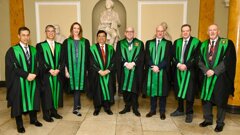
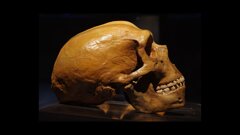

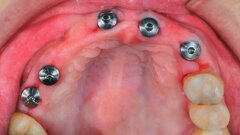
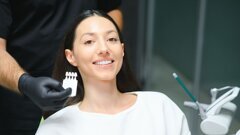






























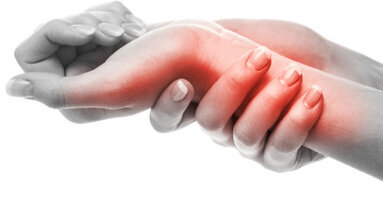




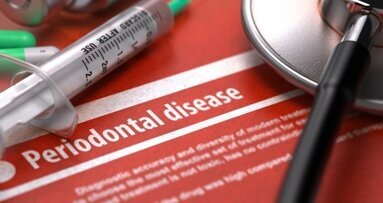
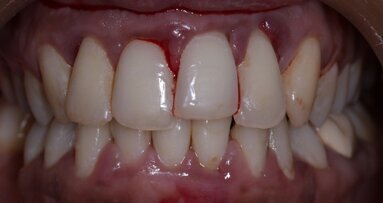

















To post a reply please login or register